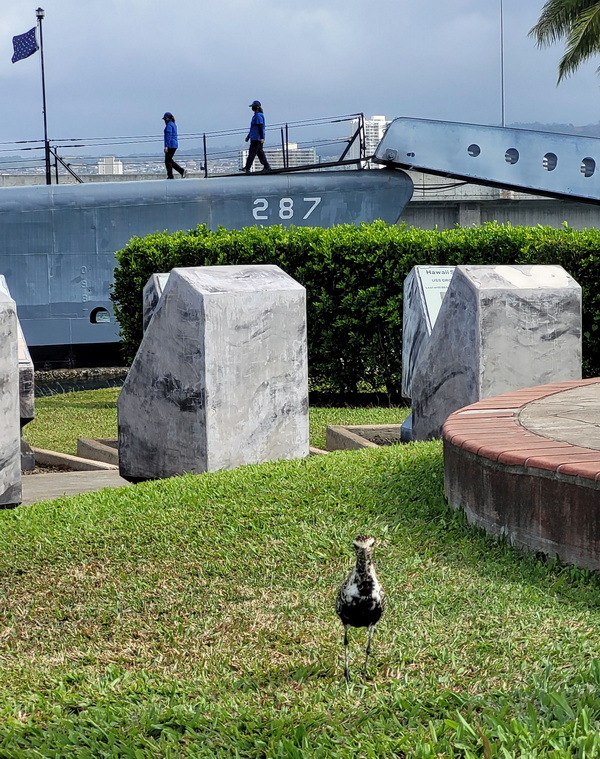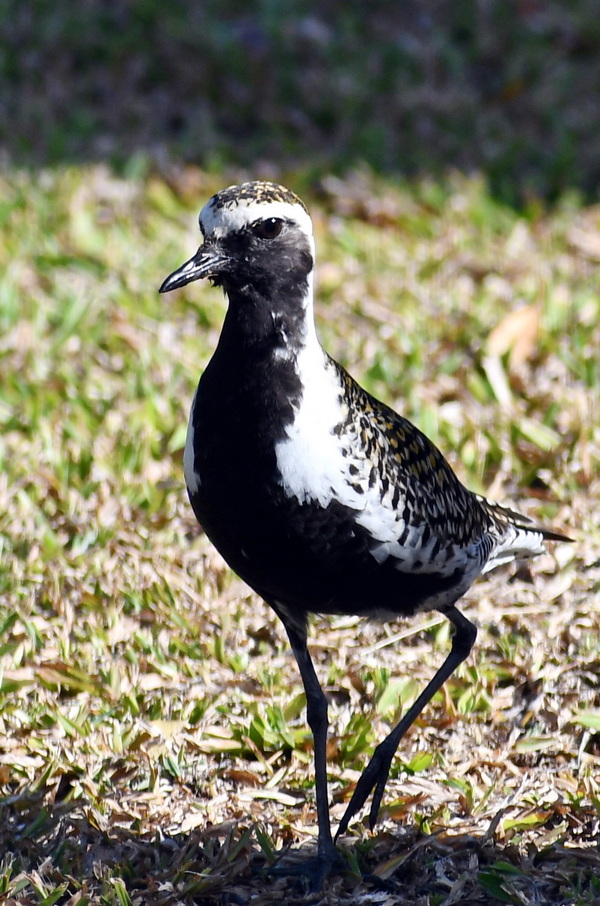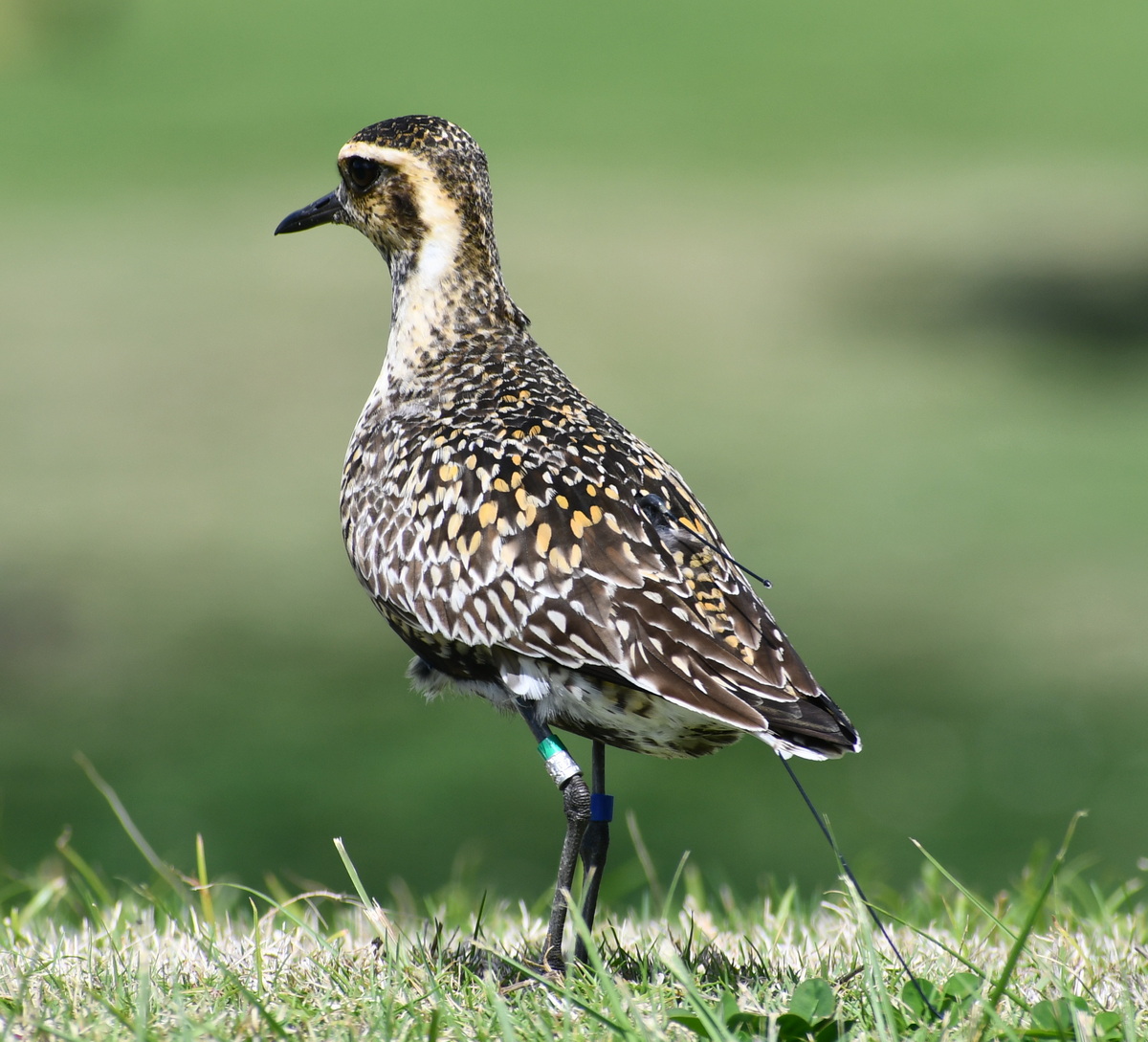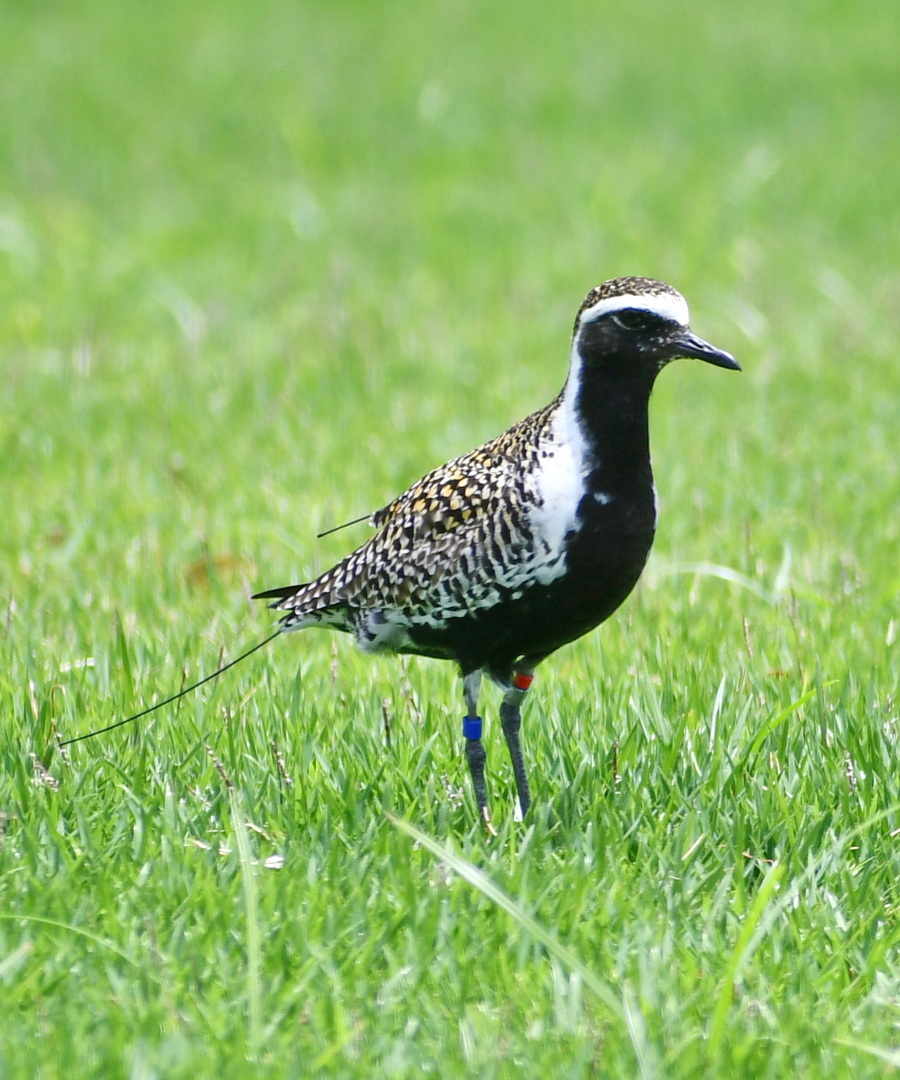
A patriotic plover, April 8, 2022 at the USS Bowfin Submarine Museum and Park. ©David Hyrenbach
May 1, 2022
This is a bittersweet time of year for us plover lovers, since most of Hawai’i’s Kolea (and our other shorebirds) have left the Islands for the Arctic. We wish the birds were still here perking up our lawns and shorelines, and at the same time, admire them for their remarkable, and mandatory, migrations.
Our bird, Jake, had molted almost completely into his spring tuxedo by April 1st, and then proceeded to bulk up day by day. (Craig joked that Jake was going to get too fat to fly.) The last day we saw him, all plump and pretty, was April 17th. Whether he joined his fellow plovers somewhere in Hawai’i or headed directly north, we’ll never know.

Our Jake on April 1st. ©Susan Scott
On April 20th, Kolea fan, Roger Kobayashi, kindly escorted me to Ford Island where he has been counting Kolea all winter. The field fronting the NOAA building is a staging area where Kolea gather before departing. I wondered if our Jake was there, a fact we cannot know unless the bird has ID bands on its legs.
Roger counted about 80 Kolea here at the height of the gathering, April 17th, with the number gradually decreasing day by day. Whether the birds took off for their 3,000 mile journey a few at a time, or gathered with others somewhere else in Hawai’i, is unknown.

During my visit to the Ford Island field, Roger and I counted about 50 birds in the field. Because they tended to line up lengthwise, less than half are visible in this picture. ©Susan Scott
I visited Punchbowl Cemetery throughout April to check on Wally’s study birds (read here) and found several. Like at Ford Island the number of birds there decreased daily, from the peak of 70, until April 27th. And then there were none.
As of April 27th, Wally reported that 5 of the satellite-tagged birds had already reached Alaska, a 3-day, nonstop flight. He emailed: “Once again, peak departure 24-26 April. Amazing — this has been the exact pattern ever since ’79-80 the first year of our studies in Hawaii!”

Punchbowl study female, April 20, 2022.©Susan Scott

Another Punchbowl study male, April 26, 2022 ©Susan Scott
Wally and other researchers involved in this year’s Kolea study will keep me informed of what’s happening, and I’ll keep you informed here. Analysis of the data we collected for the 2021-2022 Kolea Count is in progress.
In the meantime, please report, and photograph if possible, any Kolea you see in Hawaii during the month of June. Because some birds linger here into May, and others return in July, a June sighting likely means the bird did not migrate.
Thank you all for helping us learn more about these charming birds.
Aloha, Susan